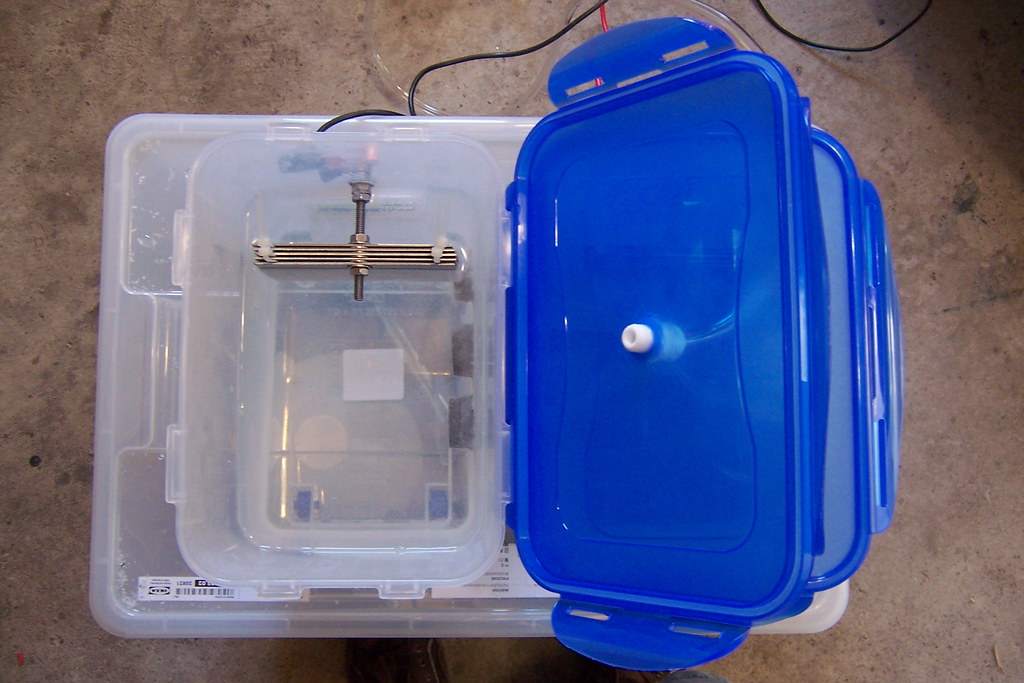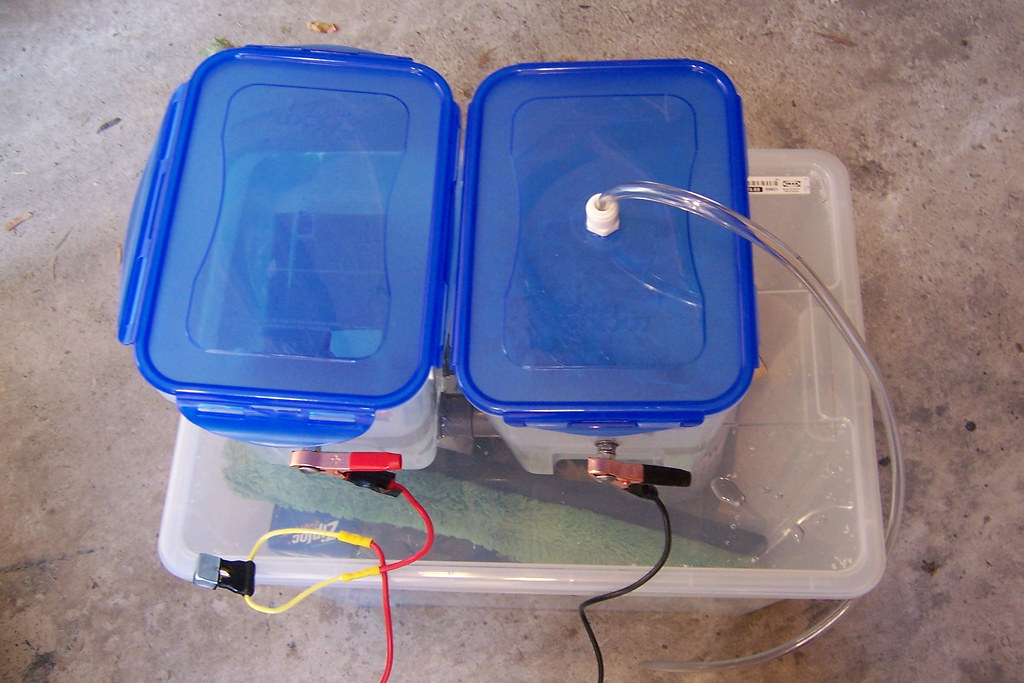http://www.flickr.com/photos/1055863...7606522453126/
I've used 2 Lock & Lock Containers [One to produce O, the other to produce HH] and connected them by 3 1-1/4 poly tubes that allow a free exchange of electrolyte between the containers.
I have a total of 10 Plates, 5 in each container with the spacing of a zip-tie/ss washer [not sure on the exact measurement], 5 Plates for [+], 5 for [-], these are 3X5 304 SS.
I'm using Lye Crystals as my electrolyte and RO water [no ppm of any minerals]. I have about 6-7 litres of RO water and about 8 tablespoons of Lye.
My Issues that I need help with:
-I can't get my multimeter to give me an amp reading, there are 3 DCA settings one that says 10A and either give me any numbers, so i have no idea what kind of amps im running at, im guessing not much, as the car battery is still fully charged after about an hour of running this.
-I'm getting fog/steam in the containers as can be seen in the pictures, it's getting warm but not hot, i can easily touch the bolts and plates, they are just mildly warm, although the air above the electrolyte is quite moist and when even slightly ingested irritates my throat bad [bad idea i know, i was just leaning over it/near it adding lye]
-I put an 8 foot output hose from the HH container into water to see if I'd get any bubbles, i've got NO bubbles coming through in all the time i watched it [about an hour, mind you i kept living the lid off to add more lye to see if it would increase production]
-The bubbles [as can be seen in the pictures] are forming on the plates and easily breaking free and rising to the top, but its certainly not as violent as i'm used to seeing on peoples youtube videos. Do I need to add more lye? Why are things getting warm without hardly any real production? too many plates, not enough plates?
I'd really like to get this thing producing some decent hydrogen, any advice would be greatly appricated.







 Reply With Quote
Reply With Quote
